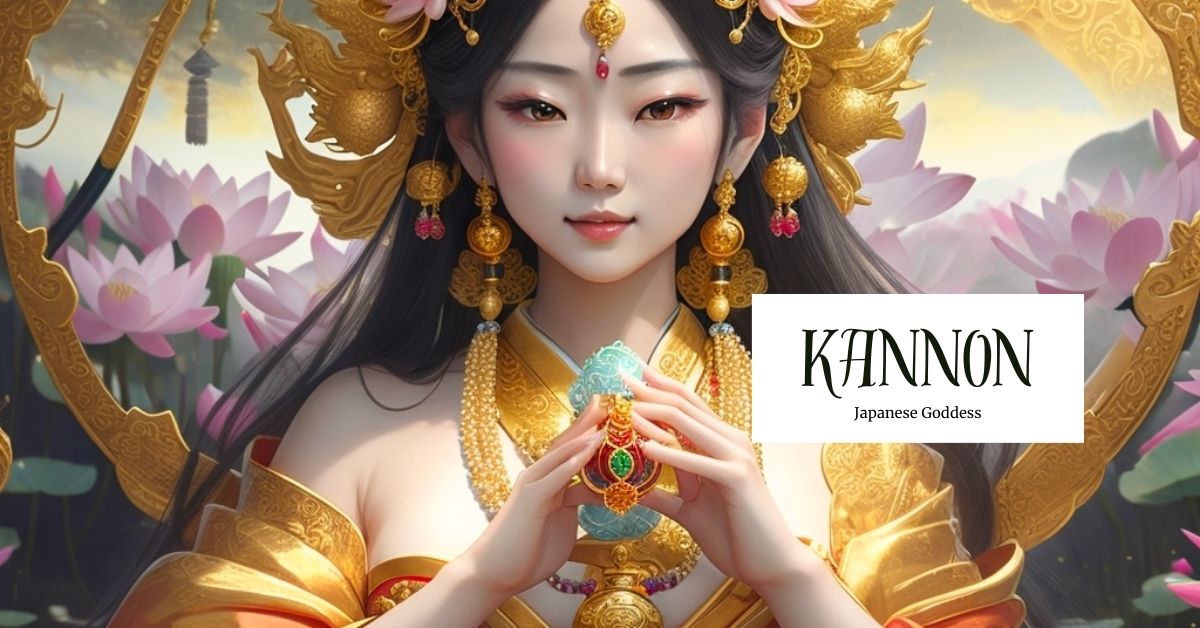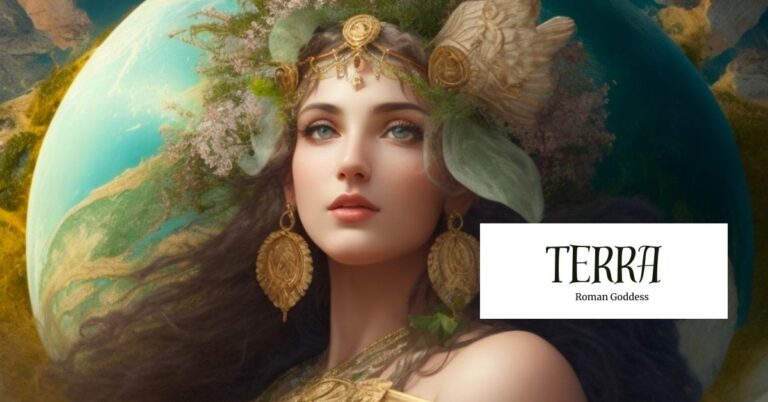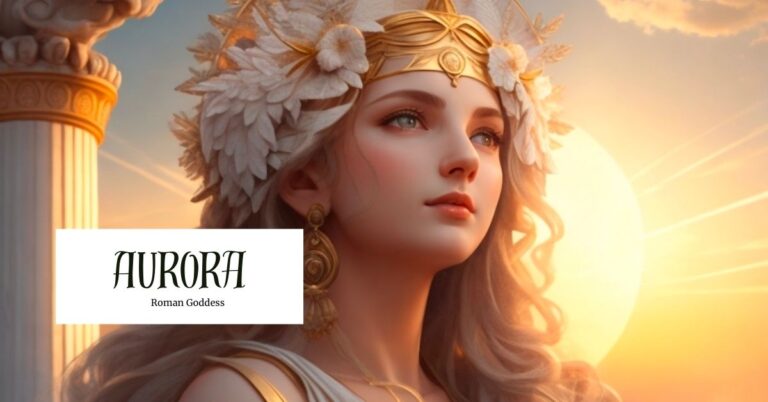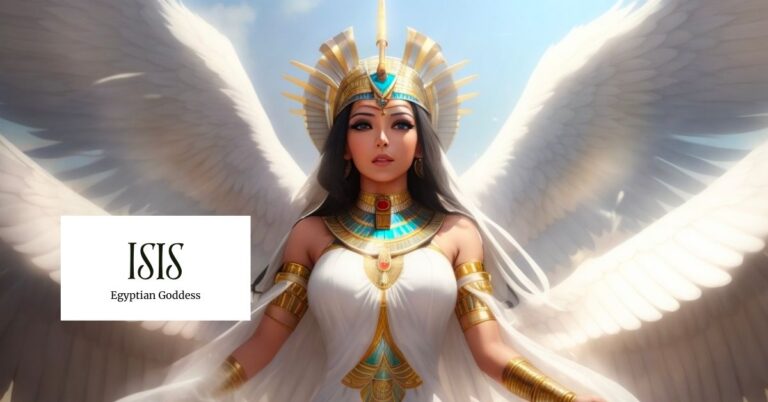Kannon: Goddess Of Mercy
The Kannon Bodhisattva occupies an esteemed position in Japanese Buddhism, symbolizing the personification of compassion, mercy, and enlightenment. Bodhisattva refers to someone who achieves enlightenment but postpones Buddhahood until everyone is on the path to salvation. Kannon’s tales recount her struggle to rescue all living beings from the cycle of life and suffering, and the story of the Thousand-Armed Kannon illustrates how firmly rooted she is in ancient mythology. Kannon’s continued presence in present-day spiritual practices is a source of inspiration and guidance for millions of individuals in Japan and beyond.
Overview of Kannon
The Kannon Bodhisattva, known as the Kanzeon or Kuan Yin, has various names and embodiments in different cultures and traditions. Kannon is the contemporary Japanese interpretation of Guanyin. In its original form, Guanshiyin means “One Who Perceives the Sounds of the World,” a direct translation of Kannon’s primary Indian name, “One Who Perceives All.” However, the proper Japanese name for Kannon is Kanzeon Bosatsu. In Japanese mythology, Kannon takes on divine characteristics and is a popular deity, perhaps the most widely worshiped bodhisattva in Japan revered across Eastern and Southern Asia (“Kannon”).
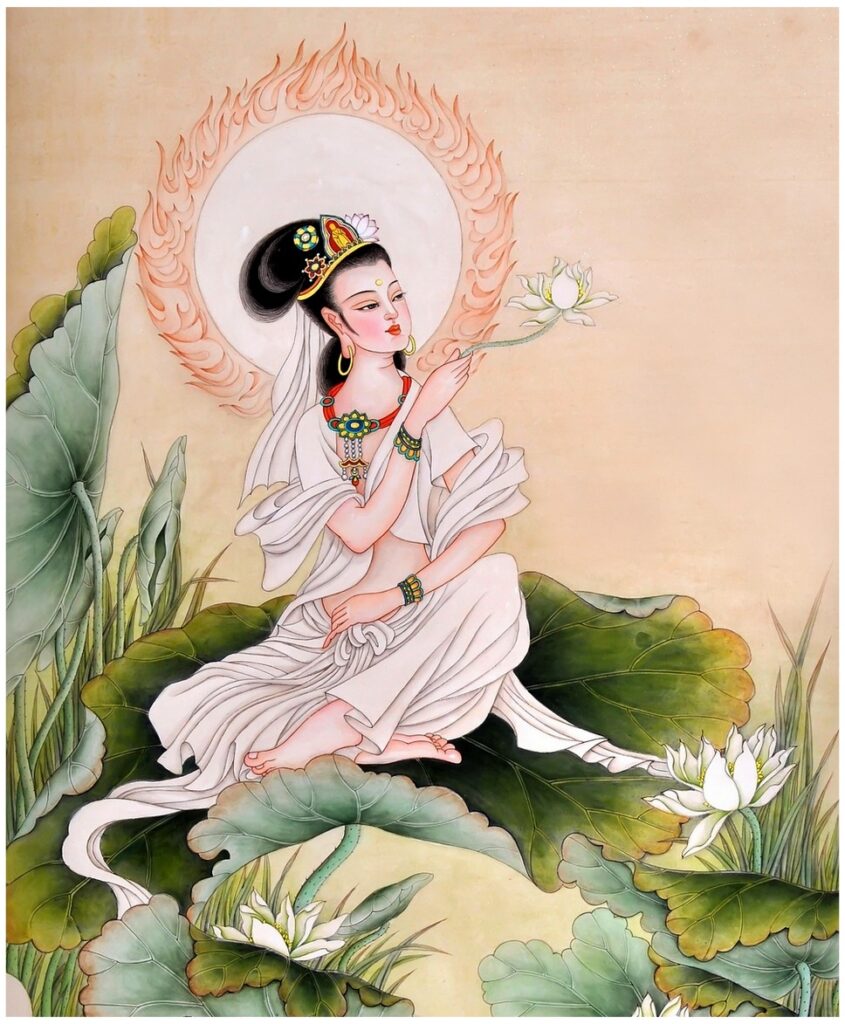
Source: Thanhamthugian
Titles
- Bodhisattva of Compassion
- Savior from Suffering
- Goddess of Mercy
Abilities
The Kannon Bodhisattva is a revered deity in Japanese Buddhism and represents divine nature and compassion. Kannon possesses extraordinary abilities that demonstrate her divine nature and compassionate qualities. One of her most prominent abilities is having the power to hear the pleas and suffering of all beings and respond to their prayers with compassion and mercy. Devotees turn to Kannon for healing and seek solace in times of illness, believing in the bodhisattva’s power to provide physical and spiritual healing. In addition, Kannon oversees fertility and grants blessings for safe childbirth and the well-being of children (“Kannon Bodhisattva (Bosatsu) – Goddess of Mercy, One Who Hears Prayers of the World, Japanese Buddhism Art History”).
Characteristics
Originally depicted as male, modern-day Kannon often appears as a female in China, Japan, and other East Asian countries. Each nation dressed Kannon differently, reflecting their own temperaments and spiritual concepts. Additionally, Kannon can take on thirty-three different forms, including one with a thousand arms and a horse-headed form, in which she protects pets in the afterlife. In the Lotus Sutra (a sacred text of Buddhism), Kannon can take the form of any god or bodhisattva in India. In Japanese art, Kannon sometimes is shown holding a magic jewel, a Nyoi Hoju, on which she makes wishes for the world. At times, she has a multi-armed form, holding many symbols of Buddhism, including weapons, and is depicted with as many as eleven heads, drawing on the imagery of naga (mythical serpent beings). The praise-worthy Kannon Bodhisattva possesses a compassionate nature, extraordinary abilities, and unique characteristics, which all help her in that her an important symbol of Japanese Buddhism (“Kannon”).

Source: MutualArt
Traits
Kannon, the revered bodhisattva of compassion and mercy, is widely recognized as the keeper of peace and the reliever of troubles. Her virtuous personality traits inspire devotion and admiration among followers, as she embodies the importance of empathy and kindness. Kannon’s boundless compassion is the foundation of her role as a savior and protector of all beings, while her profound wisdom guides devotees on the path toward spiritual awakening. Her selflessness is an exemplary model for practitioners, encouraging them to transcend ego-driven desires and embrace altruism.
Symbols
Deeply rooted in Buddhist iconography, the Kannon Bodhisattva has various symbols of significant spiritual meaning. The lotus flower, a powerful metaphor for spiritual purity and awakening, represents Kannon’s ability to transcend the cycle of birth and death. The vase of compassion, held in her hands, contains water, from which she pours out mercy to alleviate the suffering of beings and bestow blessings upon them. In many illustrations, Kannon holds a string of prayer beads, symbolizing the continuous recitation of mantras and the cultivation of mindfulness. These symbols enhance Kannon’s visual representation and remind devotees of her compassionate nature and her role in guiding them toward enlightenment.
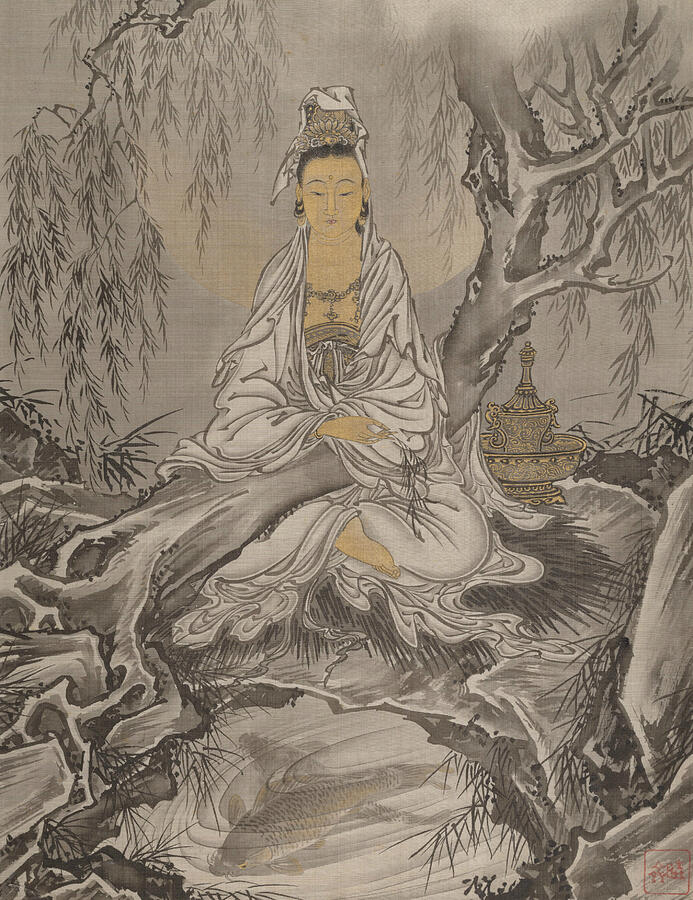
Source: Fine Art America
Festivals and Rituals
People celebrate Kannon throughout the year in various festivals and rituals, such as the Kannon Matsuri held in Japan. Devotees gather to express their gratitude and seek blessings from the compassionate bodhisattva. The ceremonies involve offering prayers, lighting incense, and donating at Kannon temples, signifying their devotion and desire for spiritual guidance. Kannon worship is essentially non-denominational and widespread, as she is worshiped independently as a savior par excellence by many sects, including Japan’s Pure Land Sects, the Nichiren sect, the Zen sect, the Tendai and Shingon sects of Esoteric Buddhism, and nearly all Buddhist sects (“Kannon Bodhisattva (Bosatsu) – Goddess of Mercy, One Who Hears Prayers of the World, Japanese Buddhism Art History”). The statues of Kannon made in Japan since the early days after the introduction of Buddhism during the Asuka Period are now registered as National Treasures, attesting to her enduring influence and significance in Buddhist culture (“Kannon Goddess of Mercy | Japan Experience”).
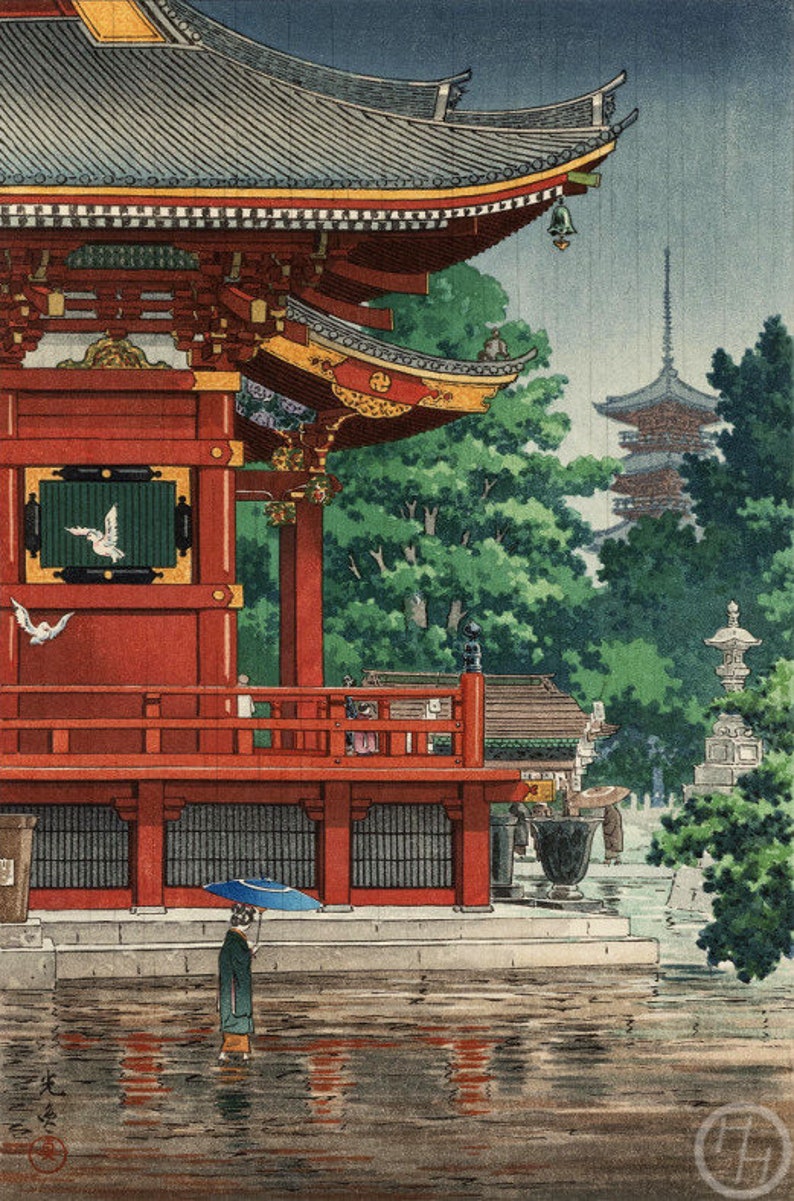
Source: Etsy
Legends associated with Kannon
The Kannon Bodhisattva has many legends that enhance her character and offer a deeper understanding of her origins and significance. Although various tales are associated with this divine figure, some are better known than others.
Origin story
The origin story of the revered Kannon Bodhisattva varies among different sources. One version recounts that Kannon was born from a tear shed by Amitabha Buddha, who was stricken with grief after witnessing how humans experienced such immense agony and suffering. This tear transformed into Kannon, who then vowed to alleviate suffering and lead beings to enlightenment (“Kannon Bodhisattva (Bosatsu) – Goddess of Mercy, One Who Hears Prayers of the World, Japanese Buddhism Art History”). Similar to the religion of Buddhism, what scholars know for sure is that Kannon, similarly to Buddhism, also originated in India with the deity Avalokiteshvara. As Buddhism spread into China, it is likely that the religion blended with local Taoist goddesses and eventually became known as Guanyin. Guanyin originates from the Japanese word Kannon (“Kannon Goddess of Mercy | Japan Experience”). The various origin stories of Kannon demonstrate the profound influence of Buddhism on many cultures throughout history.

Source: Honolulu Museum of Art
The Thousand-Armed Kannon
There was a prince who became disheartened by the suffering and agony he witnessed in the world around him. Wanting to make a difference, he renounced his royal status and devoted himself to enlightenment. Through intense devotion and rigorous practices he reached enlightenment and transformed into the Thousand-Armed Kannon. Each arm symbolizes a compassionate act, exemplifying her ability to reach out and assist countless beings at once. The legend is a powerful story of compassion and empathy, inspiring many to follow in the prince’s footsteps and strive for enlightenment (“Kannon Goddess of Mercy | Japan Experience”).
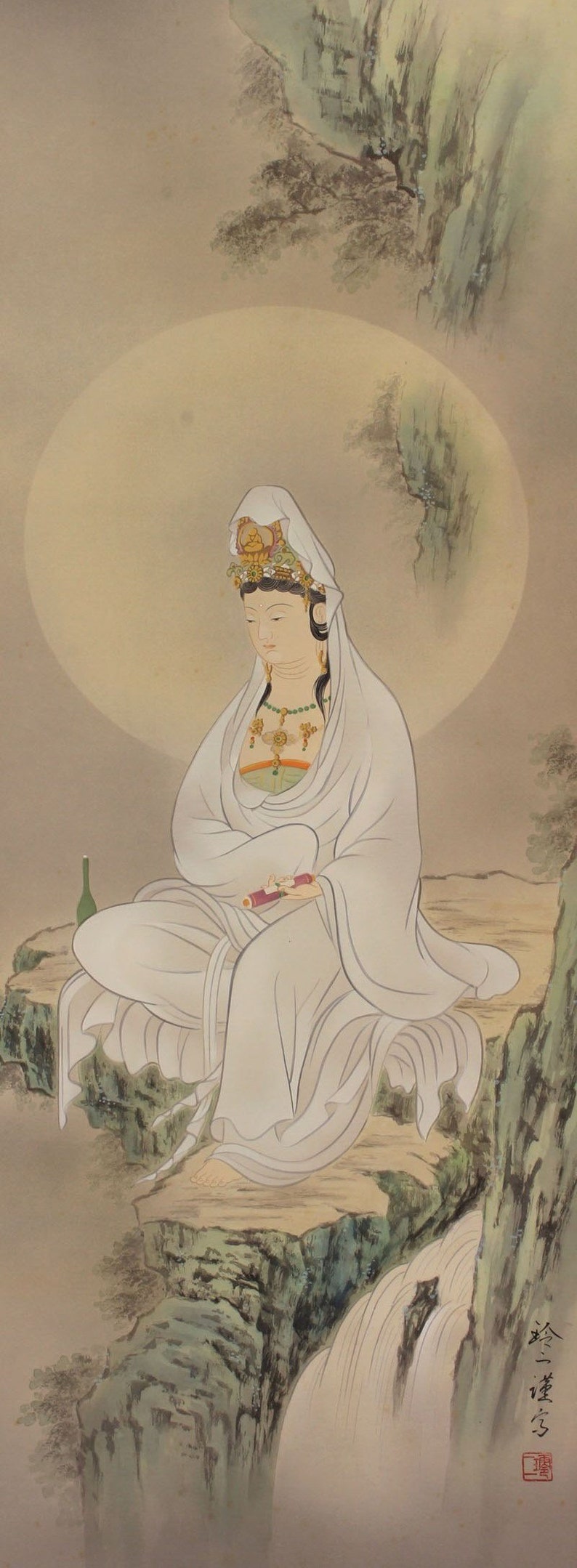
Source: Etsy
Life and Suffering
In one story, Kannon struggled with her mission to liberate all beings from the cycle of samsara, or birth and rebirth, and the accompanying suffering. She became overwhelmed by the task, feeling powerless to save everyone. In response to her struggle, Amida Buddha, a prominent figure in some Buddhist traditions, bestowed upon Kannon eleven heads and a thousand arms. With these additional appendages, Kannon could see, hear, and perceive everything, enhancing her ability to help everyone. As a result, Kannon is often depicted in art with multiple arms and heads, representing her expanded capacity to see and serve all beings (“Kannon”).
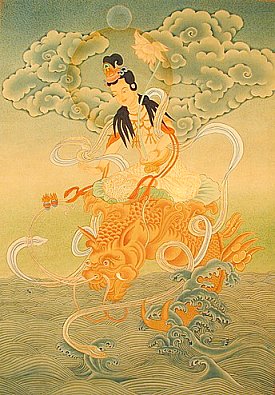
Source: Onmarkproductions
Influences of other religions/cultures on Kannon Bodhisattva
Throughout history, the perception of the Kannon Bodhisattva has evolved and been shaped because of external influences, including other religions and cultures. One notable example is the interaction between Buddhism and indigenous beliefs in Japan, which has played a significant role in defining the understanding of Kannon in that country. Specifically, the blending of Shintoism, Japan’s indigenous religion, with Buddhism has resulted in a syncretic form of worship that centers around Kannon. This fusion has helped establish Kannon as a compassionate and benevolent deity who protects and guides everyday individuals. The resulting perception of Kannon has impacted Japanese culture and society and continues to be a vital aspect of spiritual life in Japan to this day (“Kannon Goddess of Mercy | Japan Experience”).
Modern appearances
Kannon, and her counterpart Guanyin, are highly regarded entities in Buddhism and are frequently depicted in both religious and popular contexts. The imagery of Kannon is widely recognized in various forms of artwork and serves as a significant symbol in Buddhist iconography. One of the most iconic portrayals of Kannon is as Guanyin in the celebrated 16th-century Chinese novel Journey to the West.

Source: The Journey to the West, Revised Edition, Volume 4
This epic tale has inspired countless adaptations, including the popular television show, The New Legends of Monkey, and the media franchise, Dragon Ball, where Guanyin’s character continues to enthrall audiences.
The influence of Kannon extends beyond the religious and literary realms, permeating into everyday life and modern culture. It is worth noting that the Japanese photograph and imaging company, Canon, derived its name from Kannon. The choice of this name is rooted in the deity’s association with all-seeing abilities, which mirrors the company’s commitment to producing advanced and visionary imaging technology (“Kannon”).
Final thoughts
The Kannon Bodhisattva, a prominent figure in Buddhist mythology, boasts a rich and fascinating history that holds great significance within Japanese culture. With a synthesis of Buddhism and indigenous beliefs, Kannon has come to embody qualities such as compassion, mercy, and spiritual guidance, making her a beloved and revered symbol for Buddhists and non-Buddhists alike. As Kannon continues to inspire and captivate devotees, her presence can be felt in various forms of art and popular culture, reaffirming her timeless relevance and enduring impact on those seeking solace, enlightenment, and a deeper connection to the divine.
References
“Kannon.” Mythopedia, mythopedia.com/topics/kannon#popular-culture. Accessed 9 July 2023.
“Kannon Bodhisattva (Bosatsu) – Goddess of Mercy, One Who Hears Prayers of the World, Japanese Buddhism Art History.” Www.onmarkproductions.com, www.onmarkproductions.com/html/kannon.shtml.
“Kannon Goddess of Mercy | Japan Experience.” Www.japan-Experience.com, www.japan-experience.com/plan-your-trip/to-know/understanding-japan/kannon.

